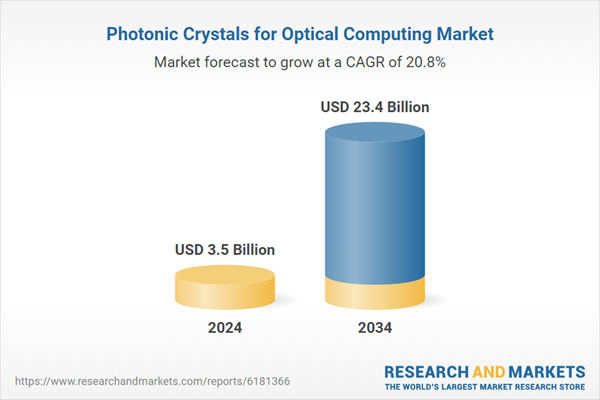This expansion reflects the growing integration of photonic crystal technologies, particularly in high-performance computing systems. Key factors fueling this growth include the increasing demand for exponential data processing, the evolution of silicon photonics, and new architecture for optical computing. The push for energy-efficient computing infrastructures, backed by government funding and defense modernization programs, is also a major contributor. The potential applications for these technologies are vast, including data centers, telecommunications, quantum computing, and AI/ML acceleration, all of which continue to drive market growth. Furthermore, rising investments in research and development aimed at enhancing the performance and scalability of photonic crystal-based optical computing systems are accelerating adoption. As manufacturing processes improve and costs decrease, the widespread adoption of these technologies is anticipated across various global industries and regions.
The 2D photonic crystal segment is expected to reach USD 1.7 billion in 2024, with a CAGR of 20.7%. The demand for 2D photonic crystals in advanced optical computing is attributed to their ability to integrate efficiently with waveguides and photonic crystal slab architectures. This trend is also facilitated by advancements in manufacturing techniques and processing technologies, which are easing the strict performance criteria traditionally associated with these systems.
The digital optical computing segment held a 39.8% share in 2024 as high-speed data processing is driving demand. Innovations such as advanced all-optical switching systems, binary logic operations, and digital signal processing with faster capabilities further contribute to growth. Additionally, energy efficiency optimization in computing and government investments in enhanced computing infrastructure are major market drivers.
Europe Photonic Crystals for Optical Computing Market generated USD 1.2 billion in 2024. The European market is expected to grow significantly, reaching USD 8.1 billion by 2034, at a CAGR of 20.8%. This growth is propelled by the increasing demand for energy-efficient computing solutions, significant investments in photonics research and development, and the growing implementation of optical computing technologies in data centers and telecommunications.
Key players in the Global Photonic Crystals for Optical Computing Market include Intel Corporation, Lightmatter Inc., NTT Advanced Technology, Xanadu Quantum Technologies, G&H Photonics Ltd., Cisco Systems Inc., PsiQuantum Corp., Ayar Labs Inc., JEOL Ltd., and Broadcom Inc. To maintain and expand their market presence, companies in this space are focusing on enhancing product performance and diversifying their portfolios. Strategic investments in research and development are key to the introduction of advanced photonic crystal solutions, improving scalability and functionality. Firms are also collaborating with academic institutions, research organizations, and other industry leaders to drive innovation and improve the efficiency of optical computing systems.
Comprehensive Market Analysis and Forecast
- Industry trends, key growth drivers, challenges, future opportunities, and regulatory landscape
- Competitive landscape with Porter’s Five Forces and PESTEL analysis
- Market size, segmentation, and regional forecasts
- In-depth company profiles, business strategies, financial insights, and SWOT analysis
This product will be delivered within 2-4 business days.
Table of Contents
Companies Mentioned
The companies profiled in this Photonic Crystals for Optical Computing market report include:- Intel Corporation
- Cisco Systems Inc.
- Broadcom Inc.
- NTT Advanced Technology
- JEOL Ltd.
- G&H Photonics Ltd.
- Xanadu Quantum Technologies
- PsiQuantum Corp.
- Ayar Labs Inc.
- Lightmatter Inc.
Table Information
| Report Attribute | Details |
|---|---|
| No. of Pages | 190 |
| Published | October 2025 |
| Forecast Period | 2024 - 2034 |
| Estimated Market Value ( USD | $ 3.5 Billion |
| Forecasted Market Value ( USD | $ 23.4 Billion |
| Compound Annual Growth Rate | 20.8% |
| Regions Covered | Global |
| No. of Companies Mentioned | 11 |








